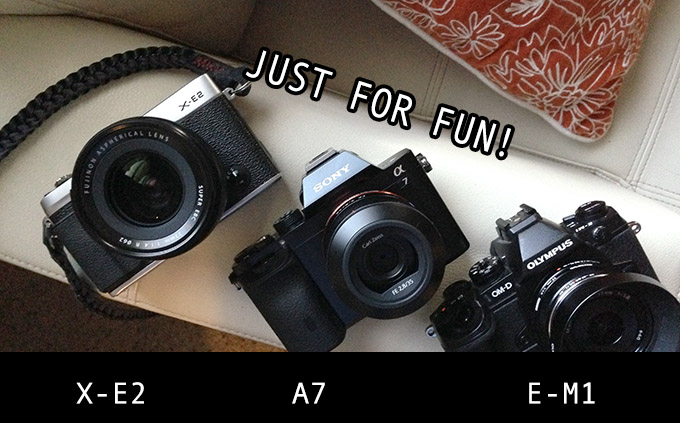
Quick Comparison: Fuji X-E2, Sony A7 and Olympus E-M1
Well here it is! The one many of you have been waiting for, lol. Just got back from a quick 24 hour trip to Vegas and snapped a few shots while there with the Fuji X-E2 and 23 1.4, the Sony A7 and 35 2.8 and the Olympus E-M1 and 17 1.8. I mainly shot with the Fuji..say..85% of the time as I will be doing a review of it here soon but just for fun (key words, “just for fun”) decided to take a couple of similar shots from each camera to see which one I liked best.
When I say “see which one I liked best” I mean image quality, rendering and usability of the camera itself.
Some Notes on the cameras during my use:
Fuji X-E2 – $1900 AS TESTED WITH LENS
I can safely say that the X-E2 is the best Fuji interchangeable lens body I have used to date (and I have used them all extensively). It is fast, responsive and feels NOTHING like the early days of the X-Pro 1 and X-E1. The 23 1.4 is a sweet lens and the built in aperture ring just adds to the experience of using the lens. The lens is sharp, fast to Auto Focus and well made. All of my X-E2 shooting was done with this lens. The AWB was the worst with the X-E2 out of the three cameras I was shooting with but I did not have any focus issues when out in Vegas shooting unlike in my dim house during the 1st couple of days. The wake up time from sleep was slow as molasses though and caused me to miss a few shots whole walking around. Still, like I said, the best X to date IMO.
Sony A7 – $2500 AS TESTED WITH LENS
The A7 is still fantastic IMO. With the 35 2.8 I had no issues with auto focus and it was just as fast as the Fuji X-E2 with 23 1.4 I had no issues focusing at night or with light. IQ was rather “full frame” like of course as it is indeed a full frame sensor. No missed focus shots with the A7 and this combo is SMALLER than the APS-C Fuji X-E2 and 23 1.4. Overall a great experience once again with the A7 and Zeiss 35 2.8. I did notice that in low light situations the ISO would have to be pumped up due to the slower f/2.8 lens so I am hoping for some faster primes to come along from Sony.
Olympus E-M1 – $1900 AS TESTED WITH LENS
The Olympus E-M1 is my 2013 camera of the year and for good reason. During use it was the fastest to Auto Focus, the fastest to respond and with that 5-Axis IS was a joy to use even in low light. The 17 1.8 is technically the least sharp of all of the lenses used yet it hung in there with nice sharpness and a great rendering (see portrait of Debby). The color from the E-M1 is the most to my liking out of all three of these cameras as is the build, usability and feel. You will see some noise even at base ISO though when doing pixel peeps. Still, will not be seen in print. The EVF here was the best of the lot by quite a large margin. Crystal clear, huge and nice color accuracy. No contest. Sony came in 2nd for EVF. Fuji’s EVF was the smallest, darkest and least sharp of the three.
The Images
I only shot TWO images to compare these three cameras. The 1st one below is just a simple portrait and I wanted to see which rendering I liked the best as well as what color signature I enjoyed the most. All three images below are from RAW without enhancements. Which one do you prefer?
BE SURE TO CLICK ON THE IMAGES FOR LARGER 1800 PIXEL WIDE VIEW!
1st up the Fuji X-E2 with the 23 1.4 at f/2.8. NOT wide open so this will bring the sharpest performance. Click for larger! FROM RAW
–
The Sony A7 and 35 2.8 at 2.8 – click it for larger!! FROM RAW
–
The Olympus E-M1 – 17 1.8 at f/2 – click it for larger. From RAW. Warmest rendering came from the Oly.
ANY of the above images would be acceptable for me yet each have small color differences and DOF differences (which is due to sensor size and aperture).
Detail and full size files
TIP!! To see these in full size RIGHT CLICK the image and choose “Open in a new Window” or “Open in a new Tab” and this way you will see the full size file open in your browser. These are direct from RAW and what you see is what you get.
Fuji X-E2 – 23 1.4 at f/4 – always love the Fuji blues!
–
Sony A7 and 35 2.8 at f/4
–
Olympus E-M1 with 17 1.8 at f/4
–
CROPS
If you view each image above in its full size form you will see the Sony pulled out the most detail all across the board. This is what I have seen in earlier tests as well. The Olympus did VERY well considering it has a much smaller sensor and form what everyone says “an inferior lens” (though I do not feel that way as I feel the 17 1.8 is superb. The Fuji is doing what it has always done..overexpose a little bit..which makes me wonder why Fuji has not tweaked their exposure system yet. For these tests I shot with the cameras on Aperture priority mode letting the cameras choose exposure and shutter speed so we can see what the output would be with each camera and testing their exposure system at the same time.
If I took the RAW files from each image and adjusted them to have the same exposure and color and then printed a 20X30 of each I bet no one could tell me what camera shot what image. In fact, I may just do this for my own curiosity this week and report back with the findings.
So what did I conclude by using these three cameras for a quick 24 hour Vegas shoot-a-thon? That…
A: The X-E2 is the best Fuji interchangeable body yet.
B: The Olympus E-M1 is still king of speed and features and build and EVF. The fact that it is even included in this company is pretty amazing.
C: The Sony A7 is an amazing technological marvel capable of some bitingly sharp images.
D: ANY of these would be superb for almost anyone wanting HQ photos. For me it would come down to usability, speed, build, etc.
With Fuji releasing a new “rumored” X-T1 at the end of this month I find it funny that it resembles the Olympus E-M1 quite a bit from the grip to the EVF hump and what appears to be a more solid build and reportedly faster AF speed. Hmmm. Should be interesting.

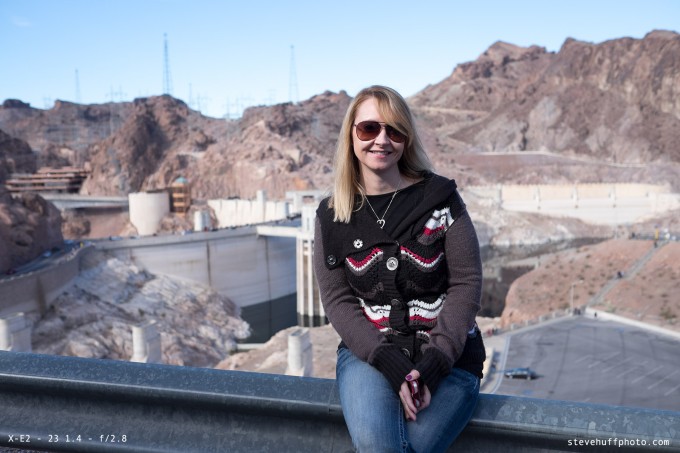
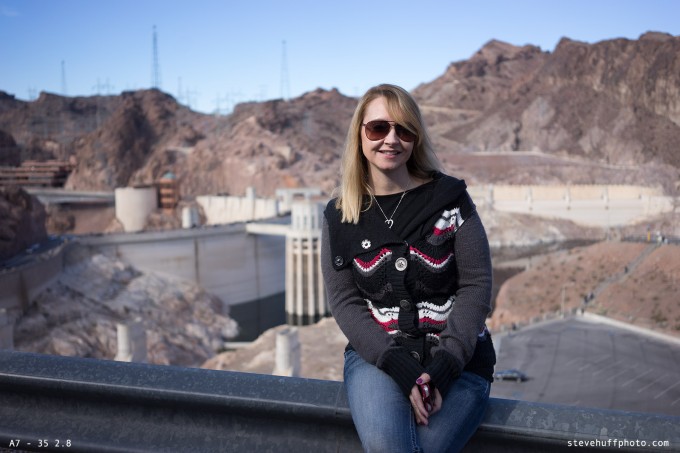
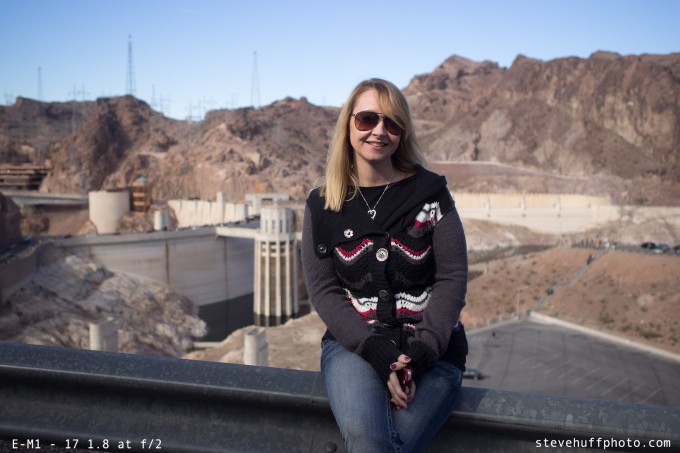
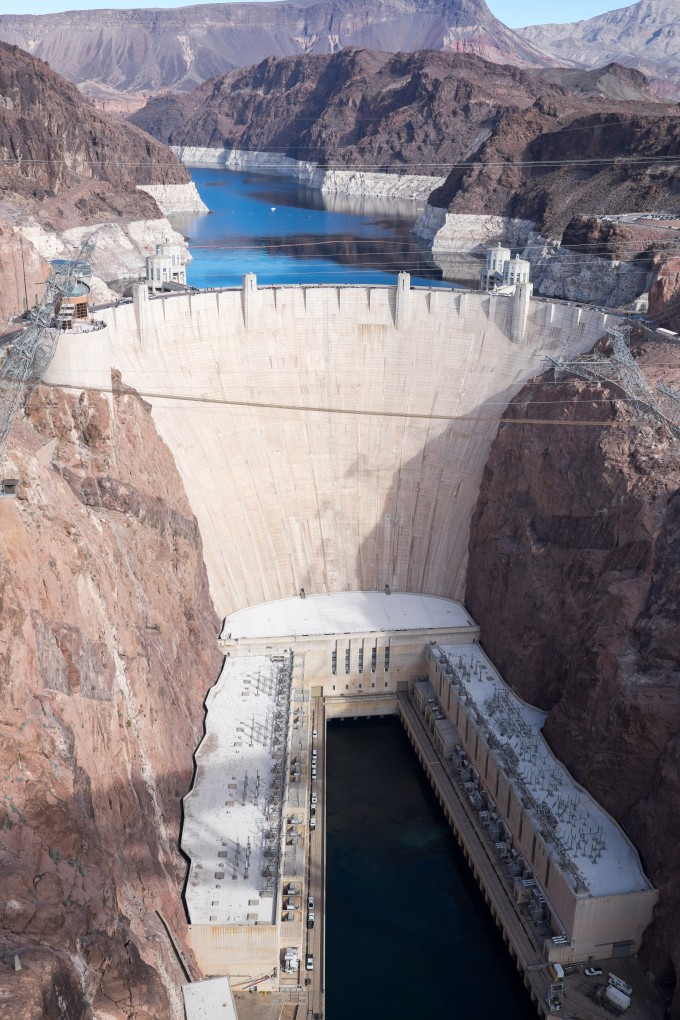
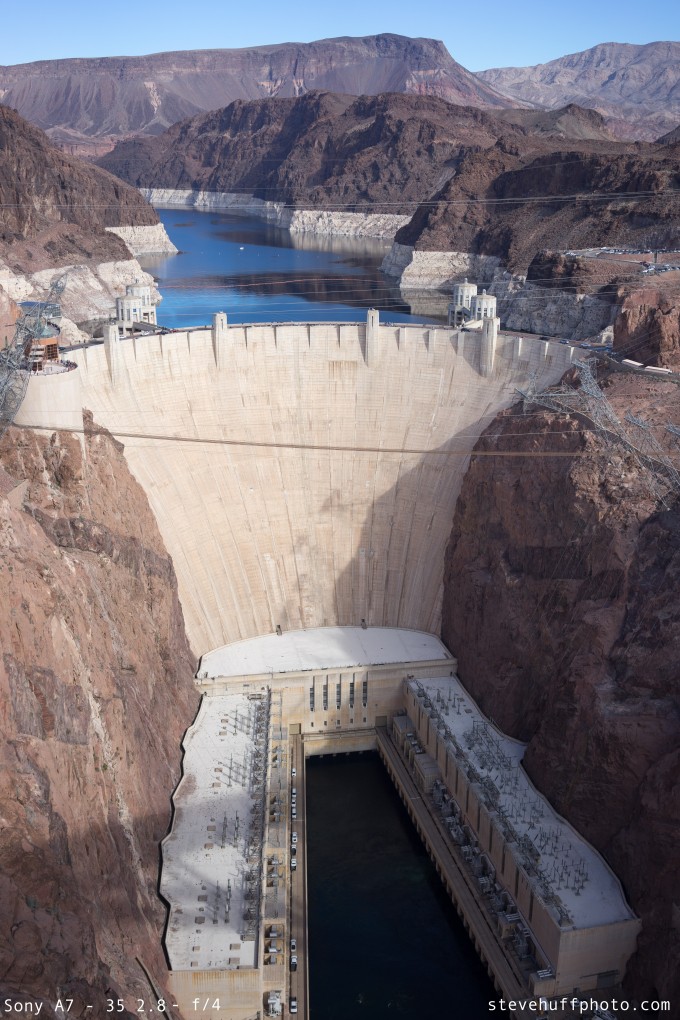
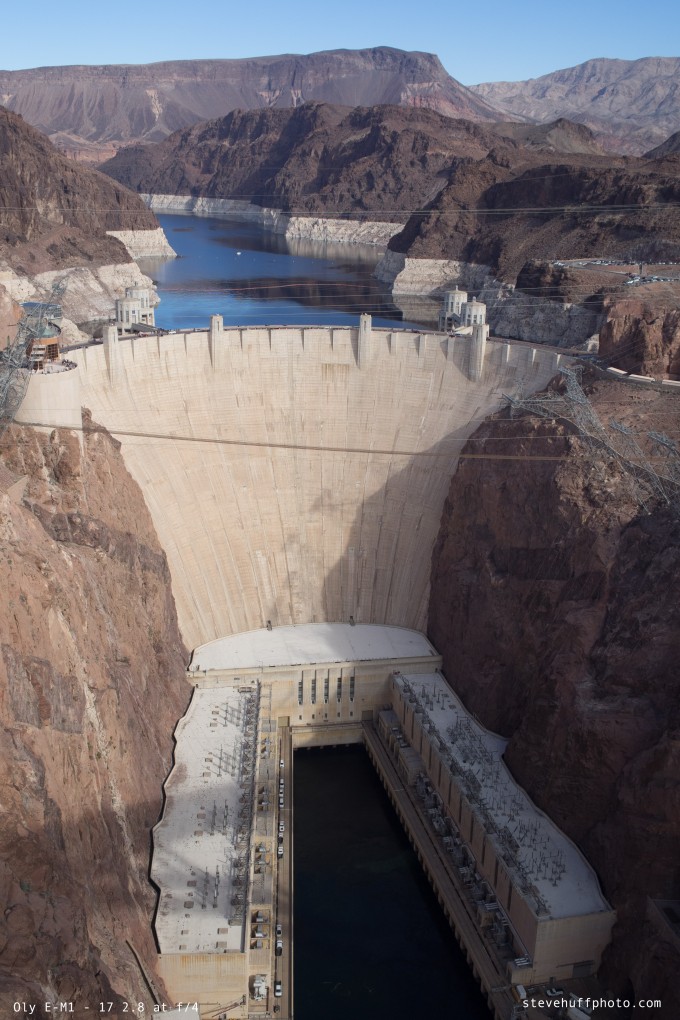
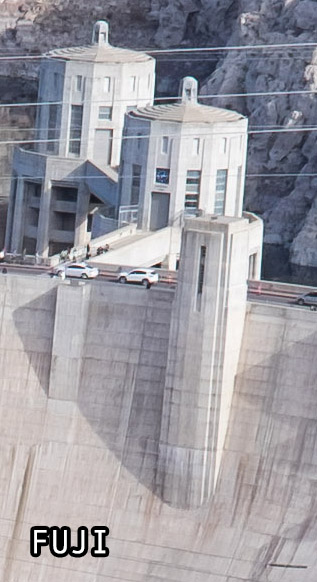
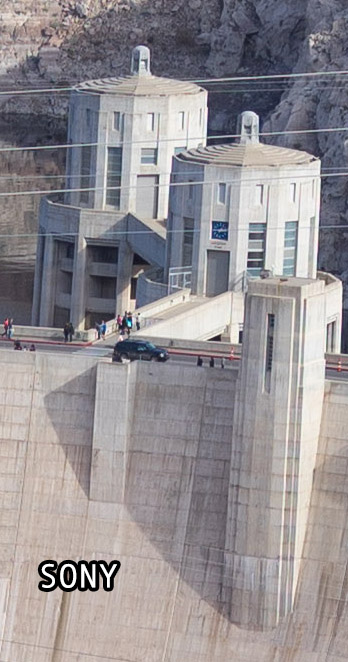
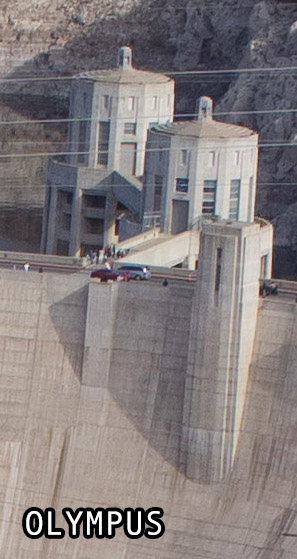
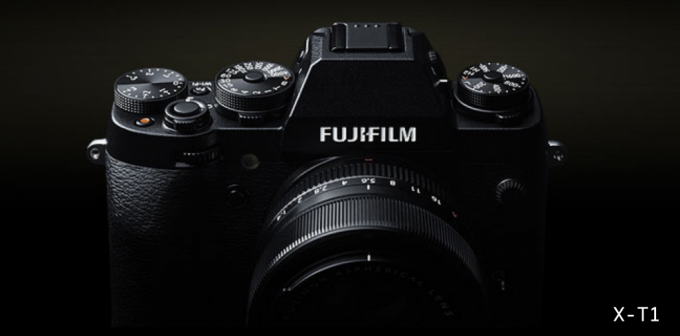
from your link :http://1.bp.blogspot.com/-oqhgjDELtDw/Ulrh4tZXJlI/AAAAAAAAbNA/AueEnFwFgLo/s1600/PA134700.jpg
Let me guess the poster, the first picture (you see left on screen) is from Nikon D3s and second is EM1, Similar case you saw from Steve’s sample above, there was something you can identified from Em1. Do you know the answer from that link?
A in depth response to the article can be found here.
http://mattsassamatt.wordpress.com/2014/02/24/all-cameras-are-not-the-same/
Hi Steve,
I can see more visible curve wall on last sample and see more cloth’s crease on first sample all from EM1’s file.
From a purely technical point of view, assuming a comparison of contemporary sensors ― and all other things being equal ― a full frame sensor is going to outperform the average APS-C sensor, and the average APS-C sensor is going to outperform a M4/3 sensor (though in this latter case, excepting Fuji’s superior high ISO performance, I’d say the differences are largely negligible―more below).
Of course, these things are seldom equal, and neither are photographers’ skill levels.
The Fuji X-Trans sensor is capable ― under the right circumstances ― of delivering IQ that compares favorably to a current full-frame camera. Meanwhile, the current M4/3 sensors are comparable to your average APS-C sensor (discounting the Fujis or the Nikon D7100) … and, in fact, many photographers have remarked that the Olympus OM-D E-M1 produces better overall IQ than the full frame Nikon D700 from a few years ago (which is pretty impressive, overall, as that camera was/is no slouch for IQ, even today).
There’s no question in my mind that when you nail the focus, and the exposure, and the light … and you take the time to process the X-Trans files properly using Capture One or Iridient, that the Fuji files are going to look superior to the Olympus M4/3 files and bump up against the Sony A7 files.
However, there are so many steps, and so many variables involved in getting to that stage with the Fuji files, that you have to ask yourself if it’s worth it for a 10-15% improvement in IQ.
Truthfully, I have seen some brilliant images from the Fujis that rival or best full frame captures. I’ve also seen some wonderful M4/3 images that easily trump the Fuji images.
At the end of the day, the final result will have much more to do with the individual photographer’s mastery of composition, light, and moment, than it will to do with the technical superiority/inferiority of these various systems.
For example, here are just three great examples of shooters who have done some terrific work with M4/3 (including some great captures Steve himself got)…
Steve’s cows >> http://www.stevehuffphoto.com/2013/08/28/the-voigtlander-42-5-f0-95-micro-43-lens-review/
Robin Wong’s work >> http://robinwong.blogspot.ca/2013/09/olympus-om-d-e-m1-review-image.html
Jay Dickman’s M4/3 work for National Geographic >> http://jaydickman.net/National-Geographic/Antarctica/1/
Robert, having read your blog I know you have owned an XPro1 & switched over to m4/3 based on your own hands-on experience. I started on a Fuji X-E1 (now X-E2) and bought an E-M1 based on all the awards (Luminous, DPreview, Steve Huff, etc.) it was receiving thinking it would replace my Fuji setup. After all, can all these expert review sites be wrong?
The E-M1 offers some distinct advantages I really liked. There is no comparable to the incredible 5-axis IS on ANY system. I’ve seen Robin Wong’s photos and to be able to get usable night shots hand-holding up to 2secs is incredible and its importance can’t be understated. I also liked the sizes of the m4/3 lenses, particularly the 45mm 1.8. While the bodies on the cameras (A7, X-E2, E-M1) are comparable, m4/3 wins hands down when you factor in the lenses. Finally the E-M1 does have the most refined shooting experience when you consider the overall speed and AF performance.
That said, I sold all my E-M1 gear after using it for a month and kept the X-E2 and here’s why… A large part of my shooting is done at ISO 800-1600 and to me, the output from the E-M1 (even paired with m4/3’s best glass the 75mm 1.8) was unacceptable showing lots of noise and generally looking flat muddy and lacking sufficient detail. In good light up to ISO400 I would agree the E-M1 can hang in there with the big boys and IQ is good enough. Forgive me for saying this but if I’m paying $1400+ for a camera, I do expect DSLR quality output including in poor lighting conditions and to me, the E-M1 fairs very poorly here in comparison to the X-E2. I do believe it’s one thing to resize images for blogs where everything looks good, but when I compared files from the X-E2 and E-M1 full-screen on my monitor the difference was very noticeable above ISO400 (even before pixel peeping) above ISO400.
Fuji is not the right system for everyone (like you & Steve) but for somebody like me who demands great IQ in less than ideal lighting it’s the much better system. Fuji has also come a long way in addressing their quirks. I dare to say the X-E2 autofocus is 99% as good as the E-M1’s now. I also love Fuji’s collection of fast-primes which I feel are optically better and give more flexibility esp in DOF (shooting the 75mm 1.8 or even 45mm 1.8 requires changing how you shoot). While these review sites are a great resource, there’s nothing like using them in your own hands and making the best decision for your own shooting style. Had I just gone with the flow and universally accepted the E-M1 without never trying any other setups I would have never known there are better options out there.
I used the X-Pro 1 significantly (haven’t sold it yet, actually). I love the camera, except for the issues I mentioned, which are significant. I also own and regularly use a Nikon D3s, so I’m very well-versed about high-ISO/low noise performance.
I grant you that the Fuji will outperform the Olympus at higher ISOs (I think a max of 400 to wring high quality files out of the OM-D is one stop too conservative, however). That’s indisputable, and the Fuji files impress the hell out of me, frankly … on the occasions when everything comes together.
But here’s the thing: assuming your subjects are not moving (or moving very little), with the 5-axis IBIS you can get away with shooting at ISO400 on the Olympus where you might require ISO3200 or higher with the Fuji.
At that point, your high ISO advantage is negated.
On the other hand, if your subjects ARE moving briskly in low light, then the Fuji’s autofocus system becomes an immediate disaster.
In such situations, neither of these camera systems is presently the right choice … and I’m reaching for the D3s.
Also, if under those same conditions — you need to stop-down to maximize depth of field — any fast prime lenses you’re using with the Fuji (or full-frame) are suddenly not gathering the light required to make the shot. Yet with M4/3, you can shoot wide open, get the maximum light gathering capability (along WITH IBIS), and enjoy the advantage of more depth of focus.
You said it yourself: the Olympus shooting experience is much better, faster, and more responsive. Sorry, but having tested the X-E2, the autofocus doesn’t compare to the E-M1 at all. Not even close when you really start pushing scenarios.
Finally, post-processing with Fuji files is not where it needs to be … even in the latest iterations of ACR/Lightroom. Color smearing issues are still apparent and I have no interest in adding Capture One or Iridient to my workflow.
I think ultimately this is less about IQ, and more about horses for courses. After all, if M4/3 is good enough for output into National Geographic, well, I needn’t say anymore…
Robert I respect we have wildly diverging views on which camera system is right for each other. My point in bringing this up was to show others who may be considering the X-E2 vs. E-M1 debate that there are folks out there who tried out the E-M1 and contrary to all the hype found it wasn’t for them. For myself, I tried really really hard to like the E-M1 and recognize it brings some significant advantages over not just Fuji but all other setups as well. I do hope not just Fuji but other companies can learn from Olympus and bring the things it does really well into their systems (namely IBIS & AF).
However, for me, m4/3 is just not suited for my shooting style and needs. I didn’t like the constraints on DOF that m4/3 imposes (it’s subjective to say more depth of field is an advantage), didn’t like the 4/3 aspect ratio, and didn’t like the IQ I was getting in less than optimal lighting; there ARE some things the E-M1 IBIS just simply can’t overcome. Any modern camera is capable of capturing output good enough for publication in the right conditions–heck I still sell some images from my old Canon S200 P&S taken over 10 years ago. I’m not debating the E-M1 isn’t a fine camera capable of rendering beautiful images. I follow a lot of photo blogs who shoot Olympus exclusively and just appreciate good work regardless of what camera took the photo. It’s these blogs and review sites that convinced me to give the E-M1 a really hard look.
All I’m saying is as a person who has tried the E-M1 and really really wanted to like it, it just never worked out. I do feel if I’m spending $1400+ on a camera, I have every right to be demanding and nit-picky that this camera better excel in the qualities most important to me and for me, the E-M1 wasn’t the answer.
Sure.
But then again you haven’t really told me, nor have I seen, the sort of shots that you believe the E-M1 cannot achieve, so it’s impossible for me to really make any further useful remarks.
I CAN say that any machine good enough to produce output for National Geographic professional assignments is good enough for me as a secondary system, and I’m pretty demanding>> http://robertfalconer.500px.com/home
You might find the below an interesting read >> http://lindsaydobsonphotography.com/blog/olympus-omd-em-5-vs-fujifilm-xe-1/
It’s intelligent, thoughtful, and drives right to the heart of the conversation we just had. And it’s from a full-time working pro.
Interestingly, Ming Thein has a similar view as Lindsay…and they both produce outstanding work with their OMs.
Let me first say nice pics, saw your website and you’ve got some great pics 🙂
I’m very familiar with Ming Thein and read his blog every now and then. I’ve read his Fuji reviews and also respect he has a differing viewpoint from me that is more aligned with your views. However he has said things in those reviews that just left me scratching my head (ie. Fuji output is nowhere near E-M1 quality). I see some perplexing comments even on Steve’s site here–for example Steve’s initial trial with the X-E2 produced nothing but out-of-focus pics. To Steve’s credit, his follow up showed no signs of the AF problems but reading through Steve’s Fuji reviews over the past few months I can’t help but wonder if there’s an inherent bias from all these bloggers left over from their initial bad impressions of the X-E1. It’s hard to be subjective when first impressions are not good. It’s been well document how clumsy Fuji got out of the gate with the initial firmwares on the X-Pro1 and X-E1 but as you probably know, Fuji has totally transformed the usability on these cameras through firmware updates to the point where for me, they give me most of the responsiveness of the Olympus cameras (I know you will disagree).
I like Lindsay’s review much better even though she’s talking about the E-M5 and the X-E1 pre-transformation. I COMPLETELY understand why people may have had a bad experience with Fuji’s initial offerings. Noone denies the Olympus experience is more refined overall. Like I said before, it’s not the right system for everyone. I’m not a “pro” like all the people you reference so I know my arguments won’t have much cred in your eyes. I simply like the fast primes that Fuji offers with better DOF flexibility and more normal focal ranges, I like the better output in low-light ISO providing more detail and ability to pump up shadow details to insane levels without any worries to the output. I have no qualms tweaking the occasional RAW file in PS but shoot most of my files as JPEG. I also just feel it’s just a better option for landscapes which makes up another large part of my shooting.
Not sure what you’re wanting me to do, I really like the Fuji cameras and feel it’s the much better system for me after having tried out both systems extensively and have no regrets selling the E-M1. The “pros” may not agree but to each his own. I’m just trying to present a different viewpoint for others who may be weighing these systems.
Hi James.
First let me say that your comments make sense. As only a semi-pro now, I do stock photography as a sideline, and have used many systems over the last 30 years, from m4/3 to large format (4×5, 8×10 view cameras). From my experience in photography, IMHO, I can state the following: Photography is both an objective and subjective discipline. Objectively speaking, as a general rule, the larger the “sensor” (or film), and assuming good photographic technique, the more detail is recorded in the image. Also, less enlargement is required to achieve a given print (output) size. Virtually everything else is subjective in nature, i.e., composition, noise characteristics, bokeh, and even sharpness, in a given image. Granted, these characteristics can be “compared” between images, but unless there is only one variable that changed, i.,e., aperture, shutter speed, ISO, these comparisons are generally not valid. Many times, regardless of which site I am viewing, image comparisons have MORE than one variable, hence, I cannot really draw a meaningful conclusion!
Personally, I think that the choice of a system depends not only on image quality (which is first, to my mind), but also on camera ergonomics, build, lens availability, etc. I have always admired the Olympus system for the build quality, and lens quality/selection, however, I have found that the final output in a 24×36 inch custom print from an m4/3 sensor simply does not maintain the sharpness or dynamic range that I seek. Hence, my current reliance on the Nikon system, using a D5300 (24 mpixel, no AA filter) and good Nikkor glass. IMHO, this represents about the maximum image quality attainable from an APS-C sensor system, and provides sufficient detail retention in very large prints. Admittedly, I am also intrigued by the new Sony mirrorless a7R, and am researching that system as well. More formal testing of the new Sony Alpha series is needed. Thank you!
I’m not criticizing your choice (I love the X-Pro 1, despite everything, and can’t quite bring myself to sell it yet), just pointing out what I believed were some oversights in your argument.
All things being equal, yes, the Fuji is capable of superior output in specific circumstances (chiefly high ISO). But in this comparison, all those things are most definitely not equal. Olympus is using other proprietary technologies to defeat some of the disadvantages of the slightly smaller sensor. I can gain 3 effective stops with IBIS. So where the Fuji might require ISO 3200 in reduced light, I can shoot the E-M1 at ISO 400 … again, providing my subject isn’t in motion.
But once again, if my subject IS in motion, it’s the Fuji’s autofocus system that’s going to let me down in reduced light.
Both of these cameras fall behind when compared to a good DSLR at this point.
Where would I personally choose the Fuji over the Olympus? If I wanted the highest quality, reasonably priced, compact system camera to shoot landscapes, particularly in lower light, then I would favor the Fuji over the Olympus (an M240 might be better still). Still, in this situation — with a tripod — one can always tilt the Olympus vertically, shoot two or three parallel images, and stitch them together … effectively creating a larger, 54 megapixel image. (Of course, you can do that with any camera and increase your effective resolution, too.)
All that being said, Fuji has impressed me with their commitment to camera development and their receptive nature towards photographers. The X-T1 should be very interesting indeed.
btw: You should seriously consider investigating Capture One or Iridient developer for your camera. You can wring a lot more quality out of those Fuji RAW files if you’re willing to spend the time and effort. If this is your primary camera ecosystem, it might be well worth your while.
Closing this on a lighter note:
Steve Huff: What’s wrong with the autofocus on this Fuji?
Fuji guy: The firmware’s OK. Fuji learns from their mistakes so they’ll get it right eventually.
m4/3 guy: It’s not all about the sensor size, the IBIS in my camera will trump any perceived IQ advantages you may have.
Sony guy: It’s not all about IBIS. It’s all about the sensor size–full frame baby!
Ming Thein: DOF isn’t everything. These Fujis can’t do anything right.
Canon/Sony: Why’s everybody trying to get rid of the mirrors in their cameras?
Hope nobody took any of the above seriously. Use what’s right for you and makes you happy…happy shooting!
Lol
Good post, James!! 🙂
Your “humor” has some “grains” of truth in it!
Thanks,
Stevetqp
Have a look at these works, printed to significant size >>
http://2.bp.blogspot.com/-3UWbmTM0QI8/Uj8AHbVWAXI/AAAAAAAAavU/54GvzTO2SBo/s1600/P9216129.jpg
http://1.bp.blogspot.com/-oqhgjDELtDw/Ulrh4tZXJlI/AAAAAAAAbNA/AueEnFwFgLo/s1600/PA134700.jpg
The first image was shot with the Olympus OM-D E-M1 and the enlargement quality looks quite good to my eye.
In the case of the second image referenced above, one poster was shot with a full frame Nikon D3s, the other with the new Olympus OM-D E-M1.
Can anyone tell me which poster was shot with camera?
A bit unfair, I agree, as it’s an image of an image, but still…
While Steve’s remark that larger image mediums generally produce more fine detail, better resolution, etc. is generally true, the game changed a bit when we transitioned from film to digital, largely because digital has seen far greater and more regular improvements to image quality in 10 years than film has seen in 100. For example, the current M4/3 cameras are already producing resolution, acuity, and color accuracy WAY beyond what we got with 35mm film 30 years ago.
I think the point I’m really making in all of this is that today’s top-end sensors, even the M4/3 ones, are capable of very good image quality that is more than sufficient for most output.
The random element in the equation is operator experience and talent.
The Hoover Dam shots look extremely similar at normal size (not pixel peeping). I liked the color of the Oly best for the portrait.
I’m curious, Steve – If you had $3,000 to spend on a digital camera system, what would you choose? I know you love the EM-1, but could a M4/3 sensor cut it as your only digital camera? Is the ISO performance good enough to be your only digital? I ask this because this is what most buyers have to think about when we look at systems.
Also, I understand why you compare unprocessed RAW files between different cameras, but what I really want to know is what does the final product look like. How do the files look with a couple minutes of post-processing? One of the issues with my EP-2 was that the RAW files didn’t handle processing very well. The initial RAW files usually looked great, but it was difficult to tweak them without bringing out noise. Do you find EM-1 files to be more delicate compared to the Fuji or Sony when it comes to Lightroom?
If I had $3k today and wanted to buy a new camera or if I did not have one yet wanted a nice camera for my own use..knowing what I know today..in the $3k bracket I would choose either the RX1R or Olympus E-M1 with 2-3 great fast prime lenses.
Steve,
Why the RX1R and not an A7? For the price of an RX1R you can pick up an A7 with the kit lens and a 35mm f/2.8 lens and have an interchangeable lens system that you can grow with.
I know you really like the EM-1, but after buying one and using it, I found the quality of the images to be very mediocre when shot in low light situations. I invested about 3k into a system and lenses, including the 17mm f/1.8, the Pro 12-40mm f2/8 and the Panasonic 25mm f1/4 lens.
The Olympus performed great in regular lighting, but once I took it to a restaurant or tried shooting it in dimly lit situations, the images had no pop whatsoever. In fact, my Sony Nex 6 produced much better images.
Having used the A7 now for a few weeks and the EM1 side by side, I have no regrets in hands down recommending the Sony over the Olympus. Olympus built a great camera, with a brilliant EVF and AF system, but unfortunately based on my experiences with it, the sensor is very limiting and overall can’t touch the Sony in IQ, so I sent it all back and kept the Sony.
You can’t go wrong with a full framed camera. Take a look at DxO’s sensor ratings. The Sony is at the top of the list, while the Olympus is about 15 points below it. If you have 3k and want to start with a new system, buy the Sony and don’t look back. The Sony is roughly the same size as the Olympus em-1 and the sensor is 3.8x larger.
You can’t beat physics…. If you care about IQ, the sony is your winner, hands down.
Of course the full frame sensor will outperform the Micro 4/3 in low light. But I have MANY images shot in low light from the E-M1 with plenty of pop. The Voigtlander 0.95 lenses will easily give you this. In any case, I find the IQ better with the RX1 all the way around. Good light, low light, etc. It is the lens on the RX1 which is the Zeiss 35 f/2 and it even beats the Leica Summicron in all tests (not just from me). The RX1 is a masterpiece if 35mm is your thing and will give you better results at 35mm than the A7 or A7r and 35 2.8. Low light or good light. It is also silent in operation.
Gregg,
Your comments comparing the Oly EM-1 to the Sony A7 images are most interesting, and they validate the impressions I’ve had, just based on research, as I regrettably own neither of these systems. Frankly, I had been strongly considering the EM-1, for its portability, form factor, and of course, high-quality lenses, prior to the Sony’s introduction. However, I don’t dispute the laws of physics, in that the larger FF sensor would logically trump the much smaller M4.3 sensor, especially in low light and when printing very large. Interesting that your praise goes to the a7. I’d imagine that the a7R is even more spectacular with regards to sharpness, detail rendering, large print, and low-light capability, due to the lack of AA filter and higher resolution!
Steve, I would agree. The A7R would most certainly produce better images, and I’ve been torn as to whether I should swap out my A7 for an A7R while I’m still in my return privilege window. The reason I went with the A7 is due to the faster autofocus. The A7R using contrast based AF only. The A7 has phase detect on top of the contrast AF and is faster for kids, etc. Since I have 2 very active ones, I chose the A7. I’ve read that using the Alpha lens adapter, which uses it’s own AF system with the Alpha lenses, negates the A7’s focusing speed over the A7R.
Since I will be typically only using the camera for fast moving subjects to film soccer and dance events for the kids, I am wondering if I should just use the adapter’s AF and Alpha lenses in these situations and go with the A7R due to the better IQ for everything else.
Any comments or opinions are appreciated. I have another week to make the swap!
Here are some things you may wish to consider:
– First and foremost, what is your final output? (How big do you want to print…assuming you’re printing at all?) I think you’ve probably already answered that question above, actually. Wall-sized fine art prints of kids playing soccer are probably not a consideration.
– Do you want ultimate resolution, or better low light/low noise capability?
– Is speed & performance more or less important than having more megapixels than you’re ever likely to need/use?
– Are you prepared to spend the money for the absolute finest Zeiss/Sony glass? That’s the only way you’ll wring all the IQ out of those extra megapixels?
– Are you prepared to use a tripod more often? That many megapixels means the sensor is VERY unforgiving to ANY camera shake or user errors. Shot discipline is crucial with this camera. You’ll need to slow down and take more time with it.
Truthfully, 24 megapixels for full frame is more than you’ll ever need. Top fashion photographers like Lindsay Adler in NYC are shooting with 21 megapixel Canon 5D series cameras with no complaints from [demanding] clients.
Ask yourself: how much is “sufficient”?
As to the Olympus OM-D E-M1’s perceived inability to perform in low light, have a look here (shot at ISO 3200-6400). Lots of resolution and depth, IMO >> http://robinwong.blogspot.ca/2014/01/om-d-high-iso-shooting-paperplane.html
Again, it all comes down to the photographer.
Robert,
You bring up some good points, but blowing up large art sized photos of my kids dancing and playing soccer were never my intention. I think I mentioned in some other posts that I was even considering going with a Nex lens which would crop my image size and make it impossible to blow them up to really large prints anyway.
The question really remains for the other things, like landscapes etc. If I use Sony’s adapter with a telephoto Alpha lens, will the AF in the adapter mechanism be good enough and still give me the ability to make large prints or clearer images due to the lack of the AA Filter in the A7R.
In terms of the Olympus in low light, those images you posted look ok and Oly’s AF seems to have produced some clear images, but I see a lot more noise in them than I care to have in my pictures.
Gregg:
If noise is your chief concern, then you don’t want the A7r, you want the A7, which will be more forgiving with respect to noise. Remember, that while noise is [generally] less with larger sensor sizes, it increases with pixel density.
I suspect the A7 has all the pixels you need/want, and will also perform much better in kinetic situations. If I were in your shoes, based upon what you’ve written, I’d personally keep it.
Again, what’s your final output? Are you going to print past A1 size or above? If you are, and you stand 6 inches from the print, then yes, you will see a tiny bit more fine detail in the A7r vs. the A7r.
But understand that without serious shot discipline, you won’t see it. Again, if you mess up technique or use anything less than the very best glass, your images could end up looking worse because those sensors are very unforgiving (it’s the same experience folks have had with the D800).
Then there’s the enormous file sizes to consider…and its effect on workflow…
—
As to those Olympus images being “noisy”, given that they were shot in the 3200-6400 range, I think they look very good, indeed … and certainly on par with what you’d get from APS-C. Remember, too, that some of that “noise” that you see on your screen won’t translate onto a print.
I have a Nikon D3s, which currently has the second best low-noise performance of any camera on the planet (after the Df), so I am very sensitive to what other cameras can and cannot do when it comes to noise suppression. My D3s would have produced files with less noise in that same situation…but not by as much as you might think.
Wow. As a m4/3 user and fan, I was intrigued to see how well the E-M1 + 17mm f/1.8 would stand up to the other two cameras. I guess you cannot call me an Olympus fan boy, because the Sony and Fuji clearly out-shot the E-M1 kit. Clearly. I am a hobbyist and I like to fiddle with image quality. It seems that the Fuji and Sony give me more music for my fiddle. (smile)
Tough decision: Purchase the E-M1 that I’ve been eyeing, or introduce myself to a second system and give Sony/Fuji a try?
Thanks for your comparison, Steve. It is very useful.
I have both the E-M5 and X-E2, and love them both for different reasons. I would really love to limit myself to only one camera, but have never been able to let go of either one. I find myself wishing they made a camera that had the EVF, AF speed, and general usabliity of the E-M1, with an APS-C sensor and IQ of the Fuji. Then I’d be a happy camper. Maybe I just need the Sony A7.
I’m in the exact same situation as you are. I have the E-M5 and the X-E2. I really want to limit my mirrorless system to only one, but can’t seem to let go of either one.
Hi Steve,
thanks for the comparison, with which in general I do quite agree. However, I do not fully agree with some findings, e.g. that the Sony gave the most details overall. If you look on the dam photo, especially in the border and corner areas the Fuji is much stronger there.
In the center area I agree that the Sony is obviously giving more details, followed by the Fuji and then with quite a gap the Olympus.
At 100% and I assume also at prints from A3 upwards, the quality of the Olympus is still very good but from my point of view, especially for this kind of pictures, clearly inferior to the Sony and the Fuji.
Daniel
Steve I like your reviews because they are always very upbeat. Viewing these examples makes me think each camera has its strengths and it depends on what you want to emphasize in taking pictures. I use Fuji and Olympus gear but I respect what Sony is doing here. Good times for the consumer. Lots of great choices.
These are all nice cameras with fine and very different sensors capable of excellent results. What I take away from these shots is: Wow. That Zeiss 2.8, wide open, is one hell of a lens.
Just curious:
Isn’t comparing RAWs just half of the whole story?
Each Company develops their own color signature… for instance those “Fuji Colors” or “Canon Colors”.
Developping RAWs (probably in Adobe S/W) – using Adobe’s Standard Profile – almost eliminates interesting differences between cameras.
Would be very interesting to see the OOC JPEG results!
Thank you Steve for this comparison. I am constantly amazed at the number of people that find the OM quality comparable to that of APS-C or FF sensors. To me, in your images, the OM is blatantly less precise and I would not be happy with it. At the same time, the speed and usability of the OM is attractive.
I suppose that two cameras to be announced soon will also weigh in this comparison. They are the Fuji X-T1 and the NEX 7 successor. The key, for me, will be autofocus speed in low light conditions. Just picture grabbing snaps in a candle lit wine cellar using a zoom. That is not a normal usage, but it is my extreme measure.
Can’t wait to find the optimum replacement for my backbreaking Nikon.
Don’t forget to include the lenses into comparison, the 17mm/1.8 is not considered the best Olympus lens and it’s a lot cheaper, too (almost half the Fuji price where I live). I don’t see this full-frame look, too.
Nice comparo! I just don’t understand why the Fuji+23mm was shot at f/2.8 in the 1st image while the others were shot wide open. The 23 is VERY SHARP at f/1.4, and the resulting “3D” look and shallow DOF would have basically matched the FF Sony! Then you might have quieted all the “Why doesn’t Fuji do FF” whiners. Ha ha! 😉
Then again I could have thrown my Voigtander 35 1.2 on the Sony and shot it at 1.2 and the Fuji could not nor could it ever come close to producing anything like it. I found the Fuji sharpest at 2.8. At 1.4 it is sharp but not as sharp as the Sony wide open. It was not meant to be a DOF test anyway and I shot it as I would have under that situation. Besides, I could not shoot the Fuji at 1.4 as there was too much light and it would have been blown out. F 2.8 was at 1/2400. F/2 was at 1/4000 – max shutter speed. 1.4 would have been blown out.
OK. Cool. That makes sense, though it would have been fun to see the difference between APS-C at f/1.4 and FF at f/2.8. Can’t wait until the 56/1.2 hits the streets, and I’m looking forward to your review and crazy comparisons with that lens!!
Steve,
just wondering since you mentioned max 1/4000 shutter speed on Fuji. Do you “miss” 1/8000 on it? Since new X-T1 have again “just” 1/4000 and base 200 ISO i wonder why Fuji can not do it with 1/8000.
Any thoughts?
Thx
The details with the A7 are unbeliavable. And looking to the size of the three cameras, the fact that the A7 is a full frame sensor is just amazing how tiny it is. Thanks Steve for this comparison.
Very interesting test. I guess the results are kind of predictable , with the A7 showing more detail, the XE2 a touch behind and the EM-1 following up the rear. It is pretty clear that you have a lot more options to crop close with Sony and Fuji over the Oly.
The details with the A7 are unbeliavable. Thanks Steve for this comparison.
With all respect, I think the Fuji X-T1 doesn´t “…resembles the Olympus E-M1 quite a bit” but comes clearly from a design heritage of Contax RX. I think it even surpasses the E-M1 design imo.
I agree. It seems to have a proportionally smaller hump, which to me at least, seems significant. It also reminds me of the Pentax LX, more in the placing of the dials than anything else. The Contax dials are quite differently placed.
Anyway, the separate ISO dial is an excellent addition, and seems well executed. As is the fact that the viewfinder doesn’t stick right out the back like the Sony and Olympus – great for making the overall package neater and easier to slip into a bag.
🙂
Fuji seem to have done a good job revocing our favorite cameras here. Take a look at the Contax though, dials are pretty equal, even in the subdials to change drive mode etc…
Hopefully it will feel a little sturdier than my X-Pro1.
That should read: Fuji did a good job to revive memories of our favorite cameras… 😉
Sorry for my english!
What does “feel a little studier” mean? Does your camera flex or has it been broken or otherwise damaged? Or do you mean you want it to feel heavier?
Steve; what would tou travel with; Nikon V1 and primes or Olympus E-M5 and 14-42mm?
Some odd conclusions. I see no evidence of overexposure in the Fuji. In the last crop, the OM seems, if anything, very slightly underexposed. All three cameras have excellent IQ, but the ranking for detail is no surprise at all. 1st Sony, 2nd Fuji, 3rd Olympus. You don’t mention this, though it is obvious, and was probably obvious beforehand.
On the Oly was on F2 on the first shot? If others on F2.8?
The bokeh of Oly actualy looks kind of similar to Fuji at one stop difference.
Fullframe still wins IMO.
I’m kind of puzzled why there is any merit in comparing the A7 with the XE2 and the EM-1. 24Mp vs 16Mp? The good thing is that the Fuji is clearly almost as good at 16Mp as the Sony is at 24mp. If Fuji were to produce a 24Mp camera, the winner would most likely be the Fuji (i.m.o.).
For those who favour the Sony, let’s hope that Sony act out of character and actually produce some decent primes to give their new CFC’s something to work with. A 35mm and a 55mm makes for a very small system. Fuji have produced a very nice little lens line-up already with more to come.
Fuji launched with exactly three lenses: 28mm, 50mm and 90mm equivalents.
Sony launched with 2 primes that are arguably better: 35mm and 55mm and a kit zoom 28-70. The new Zeiss 24-70 f/4 ships in Feb and you can use any AF A-mount lens with the LAEA adapters.
I’d say Sony is doing just fine for lenses out of the gate with a healthy roadmap announced for more FE lenses.
No doubt that Fuji has built a lovely stable of attractive lenses but between the FE and A-mount lenses available today, the options for autofocus lenses on the A7 are beyond excellent. This doesn’t even take into account adapted manual focus legacy lenses.
I wanted to be objective as possible. So I asked my wife to put the images in a folder and to make sure there is no way I can know from which camera each photo is. All the images I picked where from the Sony A7. The worst were from the EM-1. Not that the EM-1 doesn’t take amazing photos, no, on the contrary it shoots great, but the A7 and the Fuji do look better. The A7 images especially look much better. I suggest you do the same thing if you want to really be objective. Ask someone to put the images in a folder for you and remove any kind of camera model make info and choose.
Very interesting comparison, Steve! Frankly though, I am weighing the benefits of the phase + contrast detect focus of the A7 vs. the contrast-detect only, but supposedly sharper and more detailed images of the A7r. The question becomes, if you say the A7 is “capable of some bitingly sharp images”, then I would be interested to see a direct comparison of the A7 and A7r images! How much sharper and more detailed will the A7r be with no AA filter, PLUS much larger files, especially for larger prints (20×30 and up)? Thanks!
Steve-Please don’t take this as criticism, as someone new to photography, I’m just trying to understand. My question is that the biggest complaint people have with cameras is AF speed, yet people go on and on and on about the ‘user experience’ of Leicas which have no AF whatsoever. If the slow AF bothers people that much why not just manual focus?
My guess is that people complain about AF because it is very frustrating when you’re shooting in AF mode and the camera hunts for focus, and then, sometimes doesn’t focus on what you intended. You are left helpless. Also, for fast moving subjects other kinds of shots, if the camera is hunting too long, you will miss the shot.
+1, my leica always focusses on my subject 🙂
When autofocus hunts, it is sometimes a nightmare just to find how to set your camera to manual focus.
I use manual focus when I use my legacy glass with an adapter, and the results are just as good or even better than my AF lenses.
Partly, I think because in many (certainly not all) circumstances the Leica can be very quickly and accurately focused – the finder is bright and the RF split image is very positive and direct. The limitation is with lenses longer than 50mm, particularly when the subject is moving, and also with any lenses with certain visual scenes.
Other systems, such as the best of FF DSLR, have screens that are not really accurate enough for shooting fast wide angles wide open (35/1.4), but are much better than Leicas for telephoto shooting. Obviously, APS DSLRs have smaller, darker and even less accurate screens. There are special screens (Maxwell) that make focusing with FF DSLRs better, but still not perfect.
EVFs also have limitations. Even the best of them require using magnification for focusing accurately, which is a two step process (framing/magnifying). Focus peaking, though a very nice aid is not as accurate as magnifying the image.
Should include some blind test shots. I always love trying to guess which is which but in this case I wouldn’t be able to tell the difference from EM1 to XE-2 if it was a blind test.
This is a great comparison Steve. All 3 of these cameras have been on my desire list. I ordered the EM1 first and while I loved the build, EVF and auto focus, I found the AWB in low light to be off and the colors to be very dull. I returned it and picked up an A7. It was a toss up between the Sony and the Fuji and I went with the Sony due to the FF sensor. So far I have the kit lens and the 55 f/1.8. Images have been fantastic in all lighting and surprisingly, the inexpensive kit lens takes very nice pictures. I have a Voigtlander 35 f/1.4 coming tomorrow with a Leica M-mount adapter. Expecting this fast lens to be a lot of fun to shoot with.
Can’t wait to see what Fuji will come up with, although rumor has it that they will be losing the OVF on their new Pro camera. Still thinking about picking up an X100s. How would you say the X100s compares to the XE2 overall despite that it isn’t an interchangeable system?
How would an EM1 with a decent telephoto lens of approx. 200mm (35mm equiv) compare in size and weight with a Sony A7 and a decent 200mm lens? I have the A7 and the 55mm. They go nicely together, the lens is light weight, and I can shoot one-handed if necessary. I would want a telephoto to be autofocus, and would prefer something native, or at least something that doesn’t require a bulky adapter. Are there any good autofocus telephoto options yet for the A7?
Jacky, I’m in the same boat and unless you pick up an E-mount lens from the Nex system that crops the MP in half and acts like an APS-C sized lens, you need an adapter an one of the Alpha lenses. Sony has a pro lens coming that I believe is a fixed 2.8 70-200mm zoom, but it is like their G lenses and looks very large. If anyone else knows something, please chime in. I need a good telephoto as we’ll to shoot my son’s soccer games.
I would actually consider an E-mount lens for the time being, if it were small enough. I think the pixel loss would be acceptable for the purposes I need the long lens. Any suggestions for a good E-mount lens that is still somewhat fast?
Here you go … both cameras with comparable lenses:
http://camerasize.com/compact/#482.366,487.392,ha,t
Cool site, Zlatko! Thanks for replying to my post. I think I wanna say, “uh oh” because now I’m REALLY confused! 35mm sensor format versus current availability of many relatively small, fast, autofocus lenses. I wish one was the clear priority for me, because it would make the A7 versus EM1 decision more clear. I have a Leica (and a Rolleiflex) for when I want to “take my time” with shots, and I picked up the A7 for family and candid people shots. I like the ability to use Leica lenses on the A7 in native format, but now I wonder if the EM1 would be better for me. The comparison of size with longer lenses (something I unfortunately neglected to do) is making me re-think my decision…
Jacky, trust me, don’t regret your decision. Unless you want to shoot only in very good lighting, the difference in IQ between the the A7 and em-1 are very different. I purchased an EM-1 and while built great and small, the Sony is really no larger. The IQ on the Sony is so much better, especially in dim lighting. The Oly produced very poor WB and very little Dynmanic Range. The A7 is far far better from what I experienced that I returned the Oly and will never look back. If you don’t mind the lower megapixel count, you can pick us a reasonably sized telephoto lens that fits the Nex series.
Check out B&H Photo and use the link through Steve’s site here. We need to continue to support him so he can keep writing great reviews for us!
B&H#: SO5521045 MFR#: SEL55210
B&H#: SO5521045B MFR#: SEL55210/B
Or an all purpose lens like this
B&H#: TA1820035SB MFR#: AFB011-700
On my A7 these lenses act like they would on an APS-c sensor with a 1.5x crop and the megapixel count drops to 10MP, but I can easily make beautiful 8×10 prints when I frame my shots well.
Thanks Gregg — do you have any samples of shots with the A7+55-210mm? Any other options for a slightly faster autofocus telephoto lens that will not break my back?
Hi Jacky. I haven’t actually bought a lens yet for this duty, and have only played with the 55-210 Nex lens at Sony while at the mall. I have a couple of indoor shots with the lens on my A7 and they are nothing spectacular, but they were decent overall. I tried some of the A-mount lenses, but the cheaper telephotos have no OIS built in, so unless you can shoot at a high shutter speed or on a tripod the images will be blurry. The Nex lens has OIS so the shots were pretty good and at a cost of around $300 it is a very compact lens that may serve your purpose.
I am still looking into picking up the adapter with a possible Sigma or Tamron OIS lens, but I think you mentioned you wanted to stay away from the adapter.
I suggest you bring your camera to Sony and give the Nex 55-210 a try. It is very compact and may serve your purpose. As it sits right now, I may pick one up…
For my A7, I have the 55 f1/8, the kit lens and the Voigtlander 35 f/1.4. The 55 and Voigtlander lens are spectacular and even the kit lens is impressive in good lighting. I have shot with some Nex lenses on this camera that I use with my Nex 6 and as long as you don’t have to do a lot of cropping, the images are as good as they are on the Nex 6.
Very poor WB and Exposure Range? What camera did you really use, as that was not a E-M1!
A7 doesn’t even get close in WB correctness and exposure range is not different.
I had the same dilemma when I purchased both my E-M1 and A7r except I’ve been using legacy Canon FD lens instead of Leica glass. I thought I’d be using the two cameras for totally different applications but have found myself using both interchangably now and loving it! Maybe that will be the answer to your question also.
I just want to apologize for my comment earlier that you seem to have an agenda against fuji. Not because of this comparision but i just felt bad about it and thought it unfair. So you have my apologize for what its worth.. 🙂
lots of comments about shutter noise on the a7r.
After shooting all three of these side by side what are your feelings?
Shutter noise did not affect anything in real world shooting..at all.
In these circumstances, when shooting a family portrait of a dam, no. But what about at a wedding service or in a theatre? Or for general street shooting? It seems to me the loud sound of the A7, worse on the A7r is worth taking into account.
I bought the A7 for wedding and corporate events. It’s not a loud shutter, it depends if you compare to the ultra silent RX1, X100s or even the Canon 6d. Compared to the Nikon d610 or d800 is on par. Do you know that most now “famous” wedding photographers shoot with a Contax 645 and they are fine with they shutter sound…
Totally agree. I have both the EM1 and A7. Have used both on the street and during a church service. In both situations people turned around when I used the A7 but not the EM1. As a test I used the EM1 for a street shot with a unknowing subject and nothing. The A7 gave me away and I got chased away! :-). Still love the A7 though.
Side by Side, the A7 is quieter than a Minolta CLE so let’s keep things in perspective. Unless you are looking for leaf shutter sound levels, there is nothing loud about this shutter.
A7 HAS a loud shutter. You could have noticed it in store first time shooting that people turn around looking at you. And shooting at public places it got attention drawn at you easily, especially if there are people few meters of you.
And I thought that E-M1 has loud shutter or D800 and first time in church or museum and people gets annoyed about A7 if you take more than few shots in minute and more often than twice. If there is background noise like cars, talking people and machines (coffee machines etc) then it isn’t a such problem. The shutter noise was one reason why I returned A7 as you can’t do even nature shooting as even little birds gets scared about it and wild animals hear it so far away that you only get one or two shots before they have gone running.
The sound is special one and too high clapping.
What do you think about 23mm f1.4 ergonomic and usability? Is it too big or too heavy? And do we need to attach the hood all the time? Thanks.
It’s a nice lens but on the large side (though still much smaller than a DSLR lens equivalent) and larger than the Sony 35 2.8 and much larger than the Olympus 17 1.8. I did not use the hood at all and had no issues with flare.
I bought a vented metal hood from ebay, the OEM one is just silly. I agree with Steve, coatings are very good I have the hood for extreme light and for impact protection.
Steve: Thanks for your site and this post, very well done! Along with several others, I would love to hear how the pints look if/when you decide to do the 🙂
Hi Bradley. I’ve been looking for a vented metal hood for my 23mm as well. Can you steer me to where you got yours or tell me the manufacturer? Thanks. Love your web site!
Hi Leigh
Hope this is OK with Steve, but I got it from
gadgetworldexports on eBay. It was crazy cheap – $5.00 Canadian and free shipping! It took nearly a month to get it, but I was in no rush. Quality is excellent (I used to shoot Leica and this is close to that quality) and the look is great too. In fact, I ordered another one from them for my 14mm ($4.95) too.
Thanks for the kind words on my site Leigh! I plan to update it soon, but time is short for me in January 🙂
Take care.
Thanks Bradley. I’ll take a look for the hood. I’ll also keep a look out for your updates.
Thanks a lot Steve and Bradley! This may be my next new lens. I have never had a 35mm. I will give it a try!
I’m thinking about an E-X2 vs. an OM-D M5 – any thoughts? I don’t have the budget for the EM1 or A7 but want a light and versatile camera that I can travel with and use both indoors and outdoors. The E-X2 + 18-55 for ~$1400 seems like a good deal for the quality (though I worry about low-light AF), but the EM5 (or EM10) would be a bit cheaper and provide access to the broader MFT system. Thanks as always for your great reviews and insights.
I have both and can provide my insight, if it will help.
Depends on your shooting style and expectations on IQ. I personally have both the Fuji XE2 and the Olympus EM5. Fuji I purchased new and Olympus used on eBay for much less. If I had to pick between the two, I would choose the Fuji for myself. I just like the manual dials, image quality and ergonomics. But since the Olympus EM5 has some fantastic lenses and blazing fast for less money, I would recommend the Olympus. One thing I hate about Fuji is the video quality sucks which makes the Olympus nice. So often times when I want to do video I end up with the EM5 even if I have a slight preference for Fuji.
The olympus is a sweet camera, but to get a zoom with quality like the fuji, you’ll have to buy the panny or olympus 2.8 zooms, which are pricey. Also, I’ve seen the x-e2 kit out of Japan or HK for $200 less.
Thanks Steve love these crazy comparisons. I had so much trouble deciding between the OMD E-M1 and the Sony A7r I ended up with them both! The EM1 is just pure pleasure to shoot and the A7r’s files are just pure pleasure to look at. Not that I can justify having both cameras but it would be even harder if it was between the A7 and the EM1. Think I would have to go with the EM1.
I was back and forth trying to decide between these 2 and this solved it for me. I will buy the EM1. Thanks !
The X-T1 looks just so much like a Contax SLR that it’s not even funny. But I do love the idea of having more physical dials: ISO, Exposure mode and shooting mode. The controls look much better than the Nikon Df.
I love the Rangefinder form, but the X-T1 might make me change.
agreed, and the big one for me is the aperture dial on the lens. I an old RF shooter (M4P) and SLR (Rokkor) and I never got to liking the thumb wheel aperture (or whatever) – it belongs on the lens… period. My right hand does not need more work 😛
I like the X-T1 look too, but think I will still wait for the XP2 – I really like the OVF idea, so it’s me an my X-E1 til then i figure 🙂
+1 Don’t forget that Fuji is the only AF show in town that still uses Aperture rings on the lenses! This is huge IMO, my right hand has enough to do what with all the dials, buttons, and switches on that side of the camera. I’m an old RF (M4P) and SLR (XK & Rokkor) and can’t stand the thumb wheel revolution.
This body and its features sound sweet, but I am still inclined to wait for the XP2 – gotta love that OVF+EVF combo 🙂
I will admit I am a total Fuji fanboy. LOVE my X Pro. And I dare say the Fuji 23mm looks the sharpest and most 3d to me.
Do it Steve. Print’em! My wife and I just got a new Epson wide-carriage photo printer and we’re printing a lot of our stuff. Very satisfying!